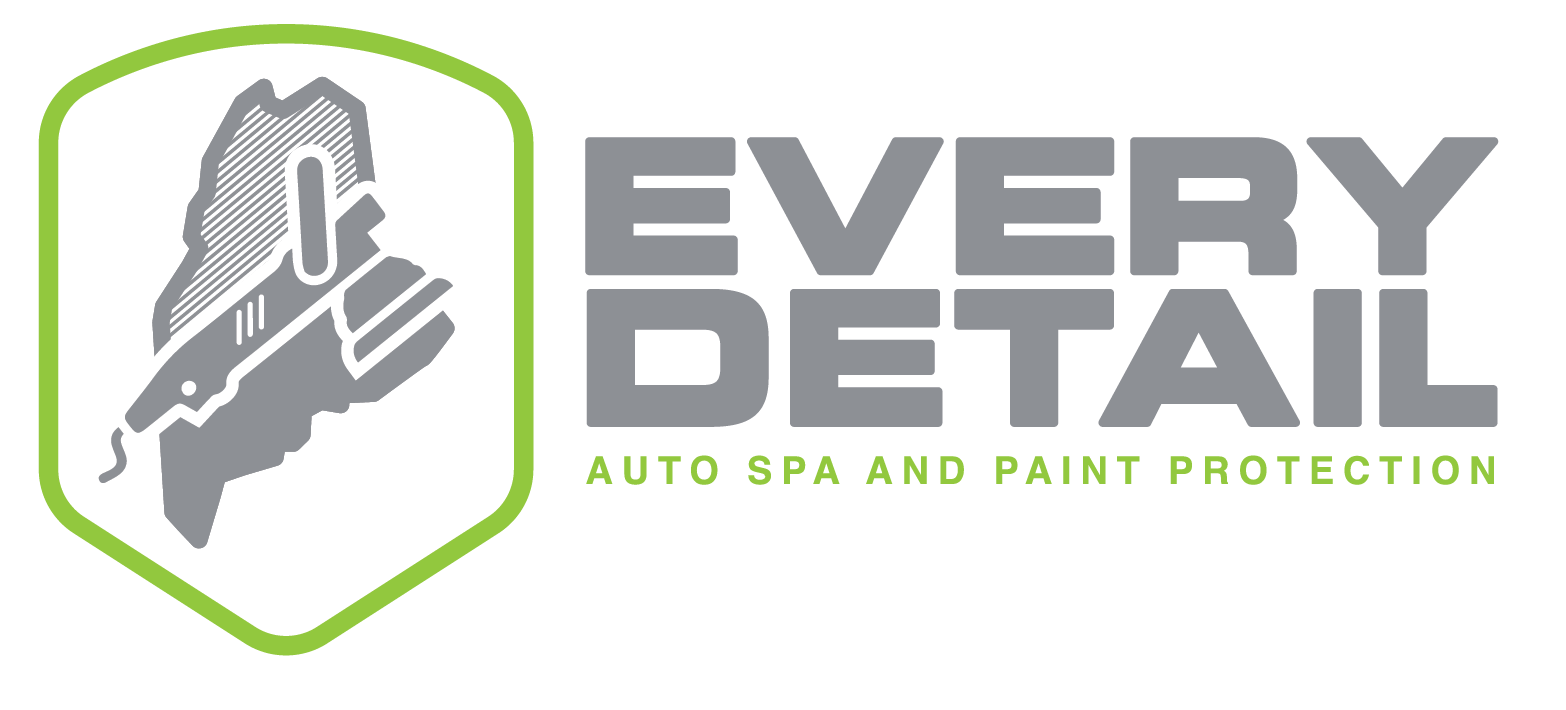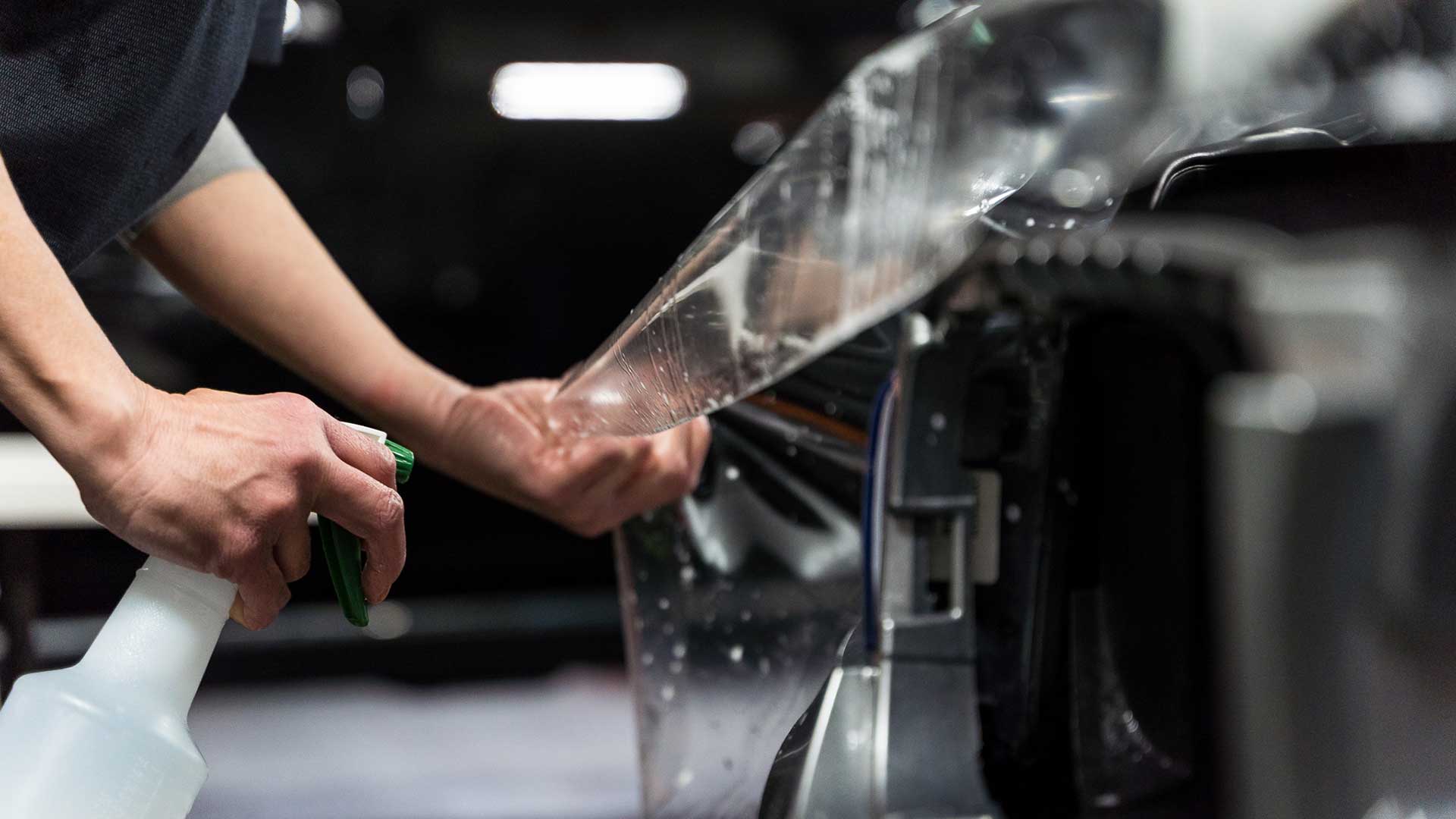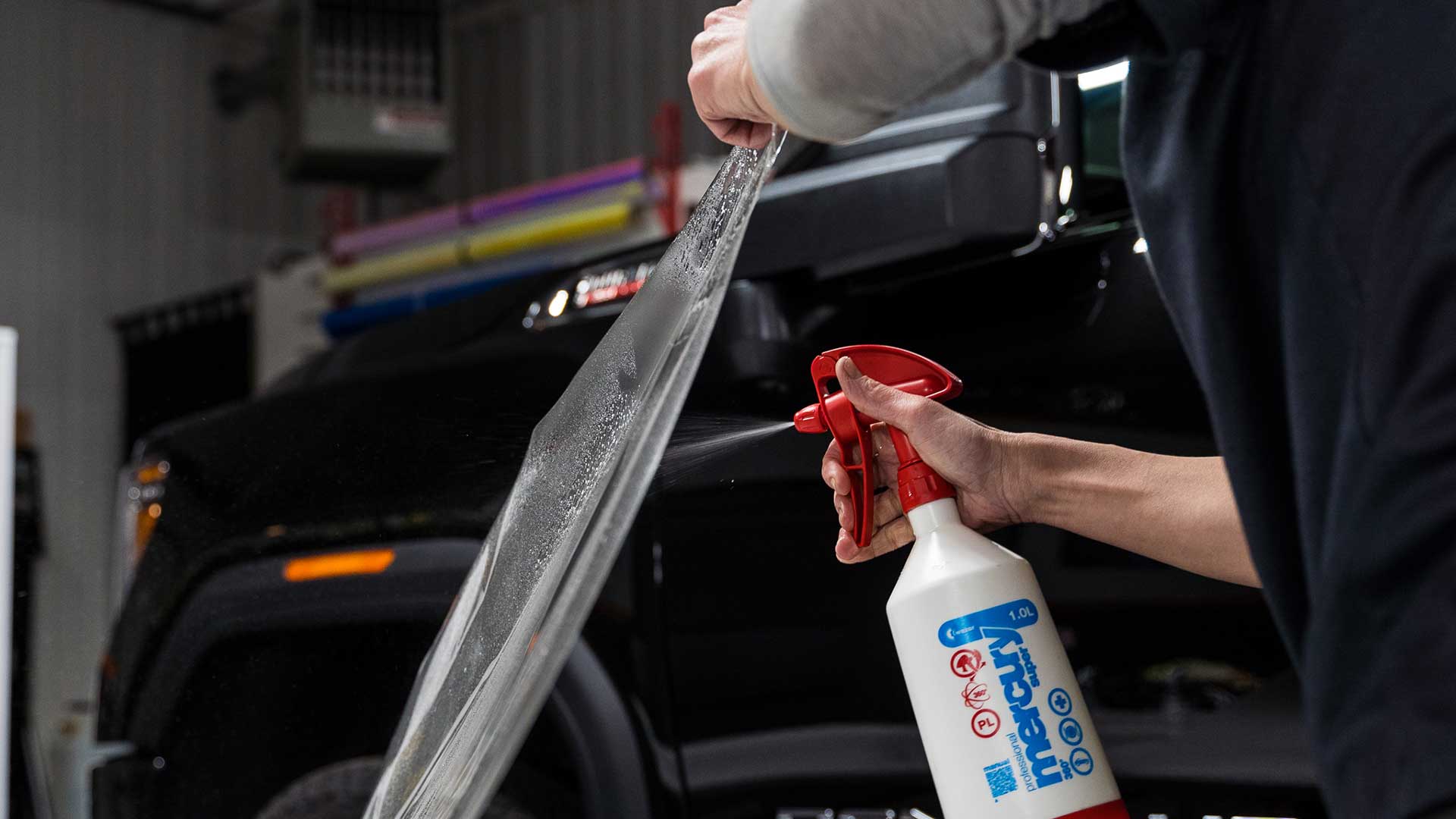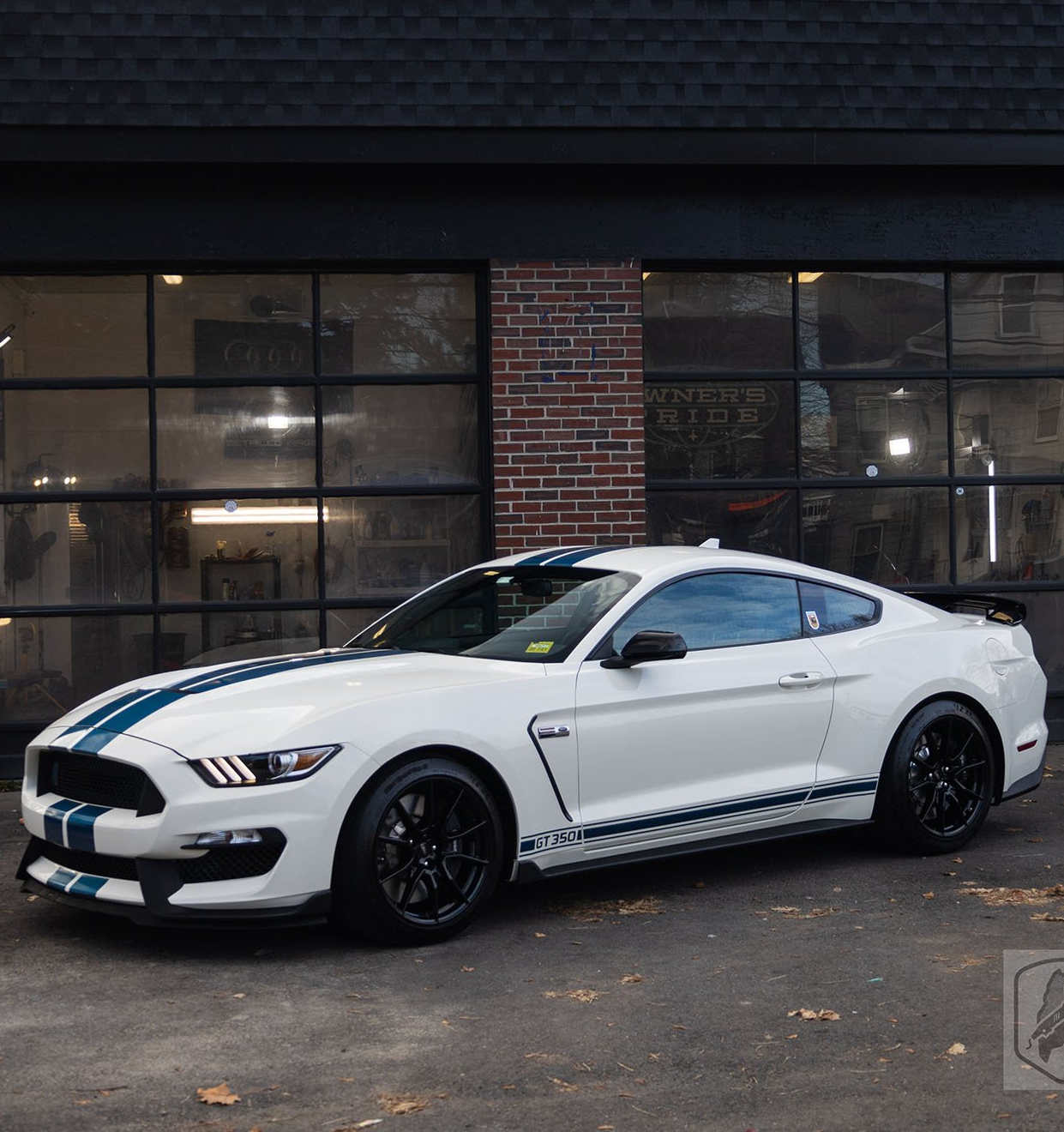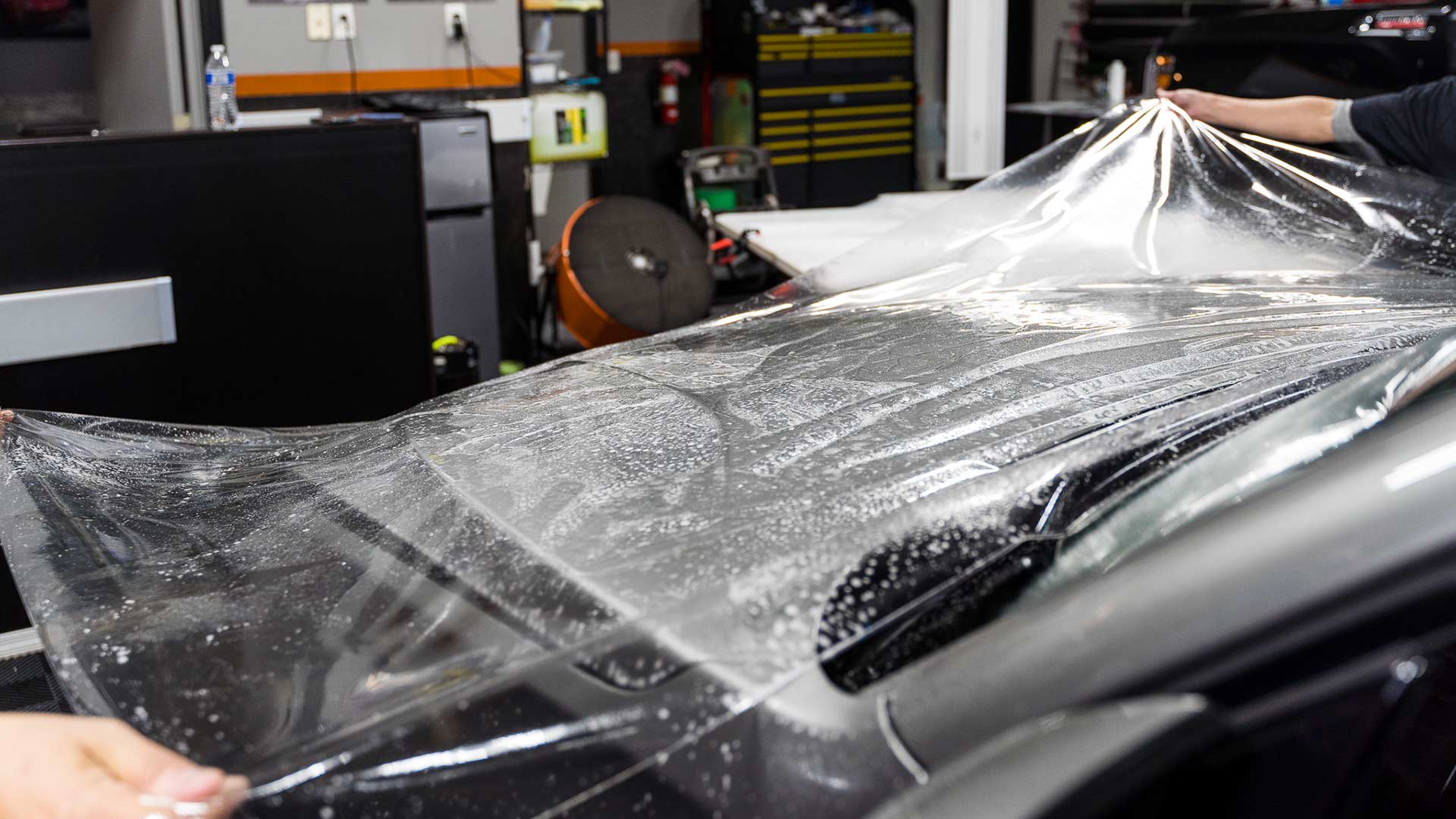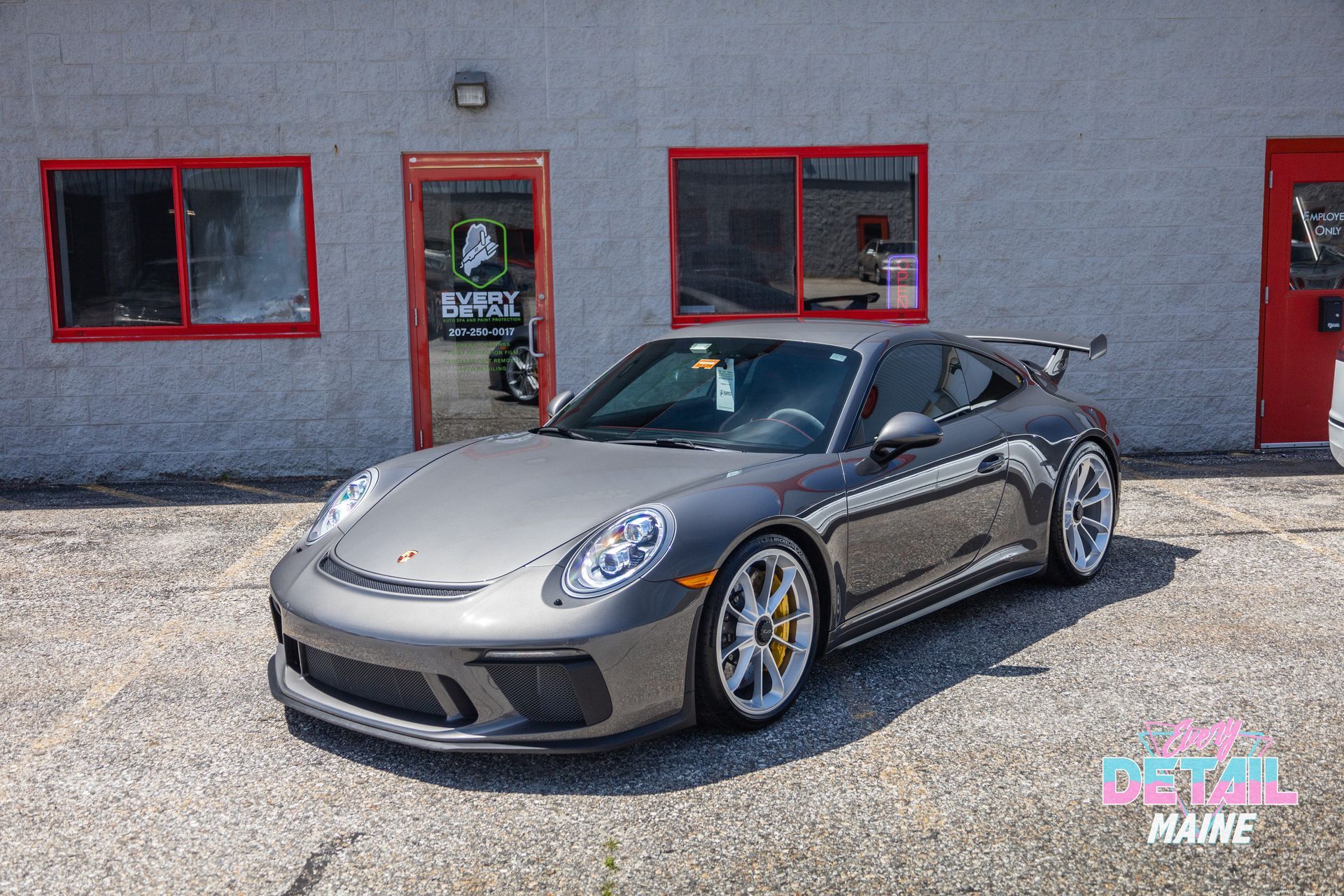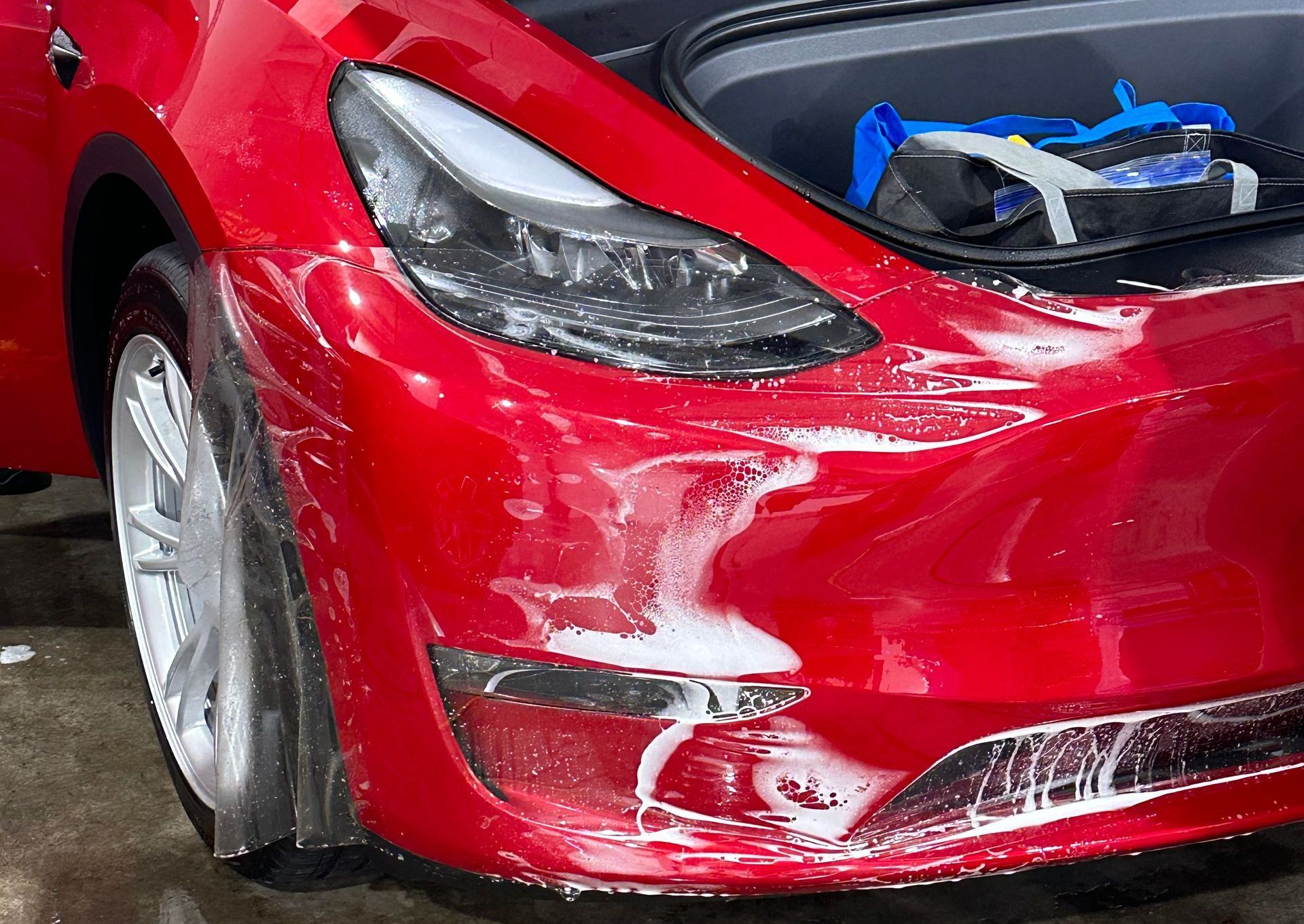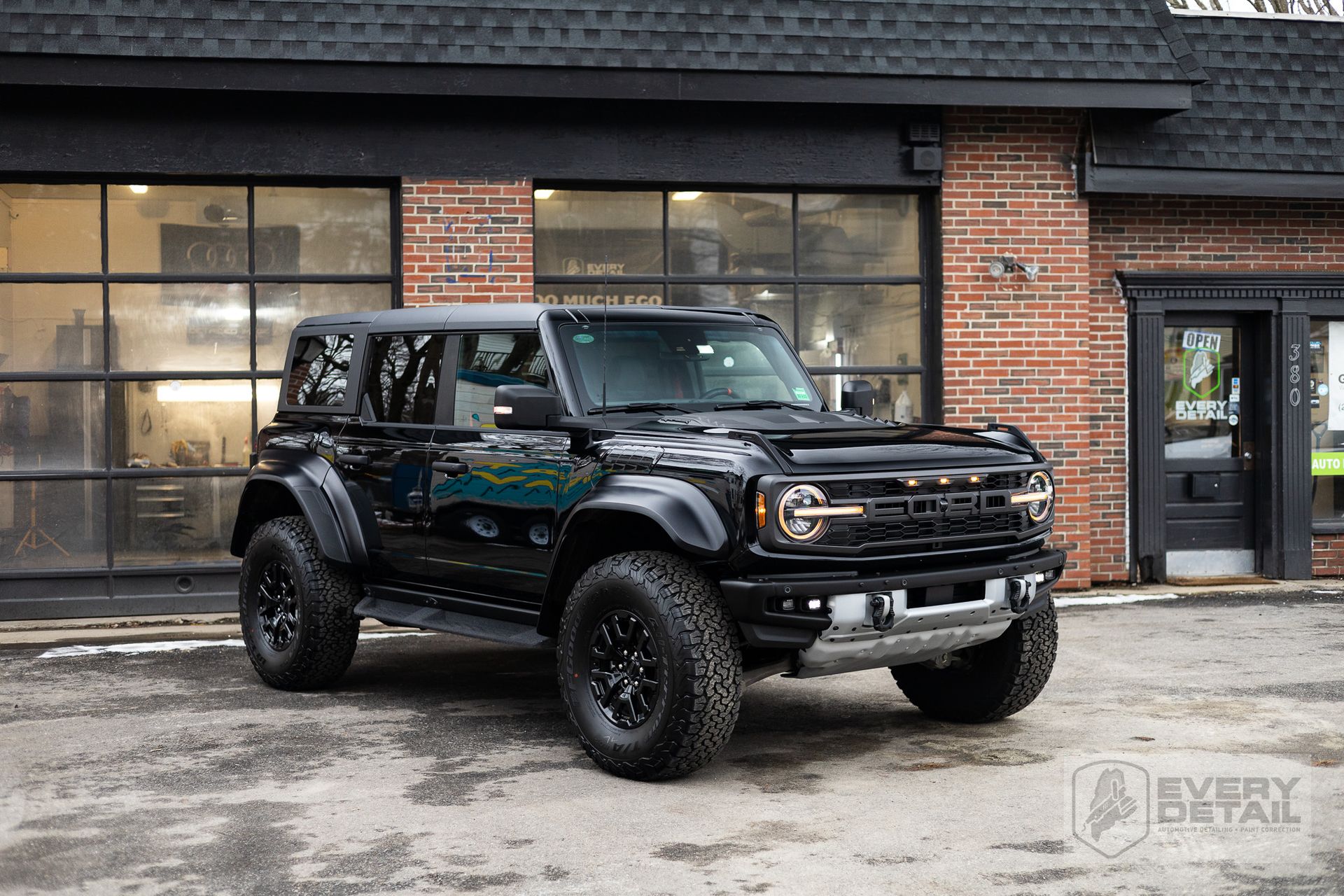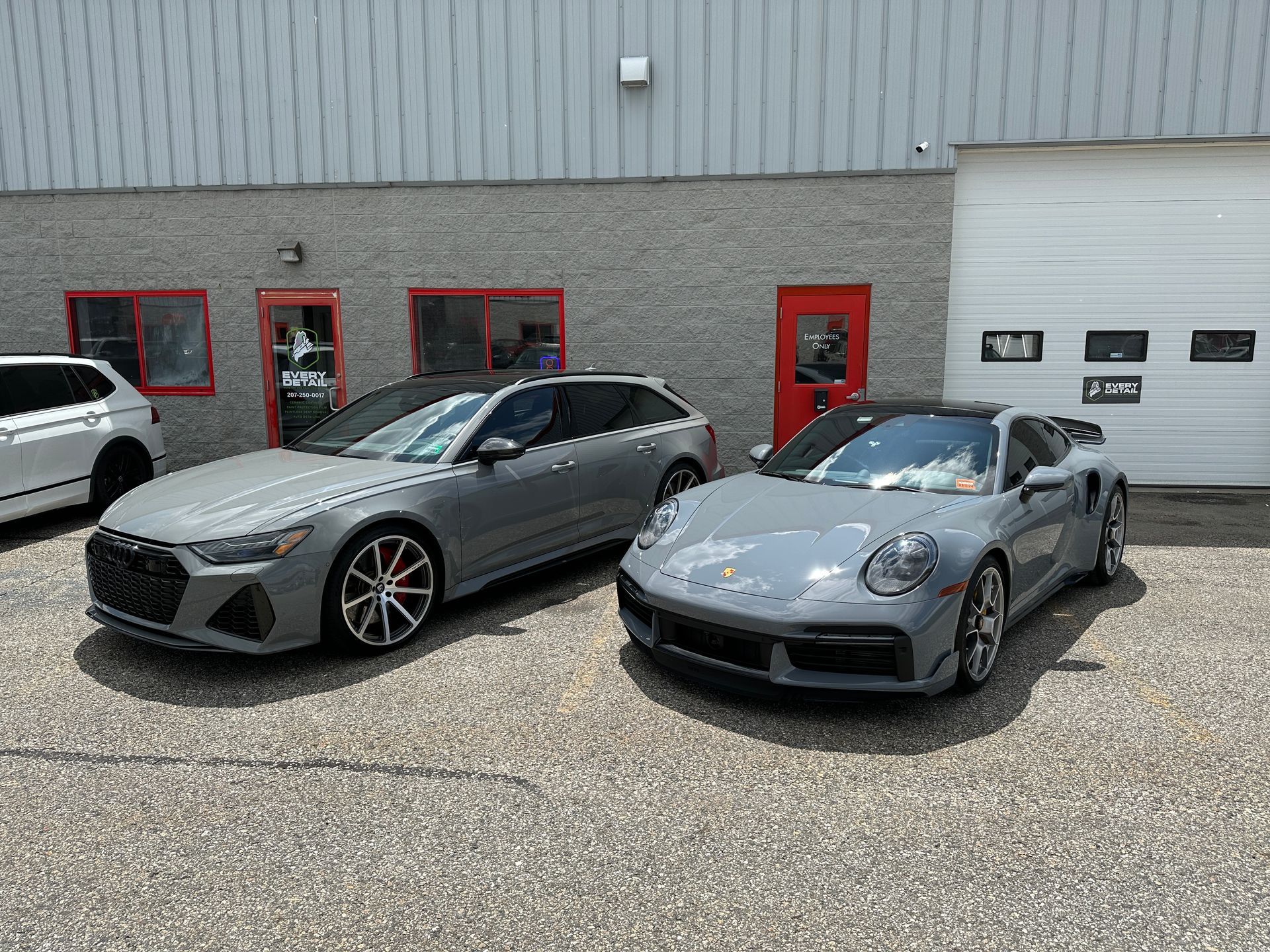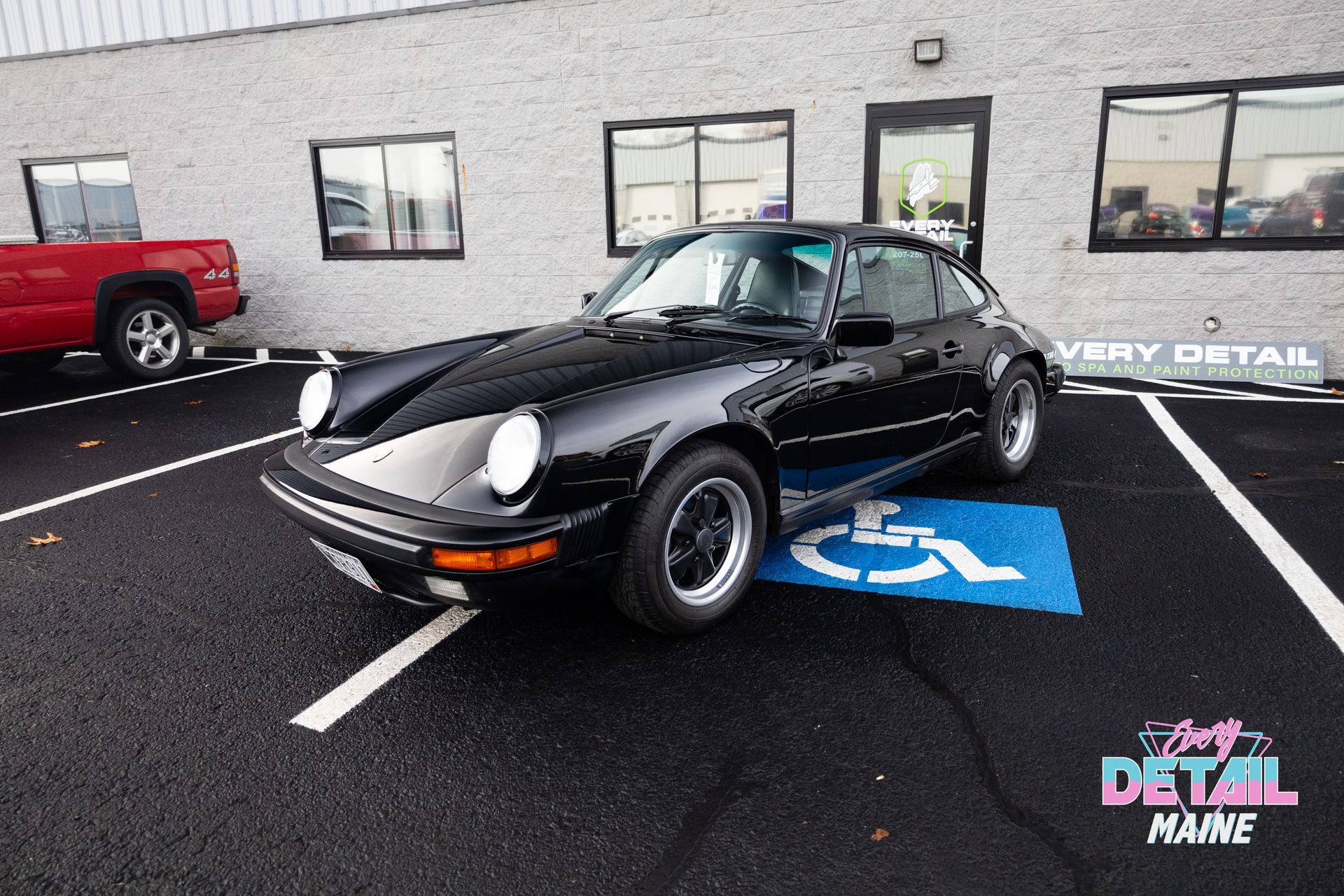Paint Protection Film: Why It's a Smart Investment for Your Vehicle
When it comes to keeping your car looking sharp and new, most people think of regular washes or maybe even a good wax job. But have you ever considered paint protection film? This thin, invisible shield might just be the best way to safeguard your vehicle's paint from those everyday hazards like chips, scratches, and sun damage. This isn't just another car care fad; PPF offers real benefits that can save you money while making your ride look fantastic for years to come.
Paint protection film is considered a smart investment because it offers superior protection against physical damage, such as chips and scratches, thereby preserving your vehicle's appearance and increasing its resale value. Additionally, PPF's self-healing properties and ease of maintenance make it a cost-effective solution for long-term vehicle care, ultimately saving you money on paint repairs over time.
What is Paint Protection Film?
Paint protection film, or PPF, is a clear, flexible material designed to serve as a shield for your vehicle’s paint. It's primarily crafted from polyurethane, a durable material known for its impressive impact resistance and remarkable flexibility. Essentially, PPF functions like an invisible armor that protects against everyday dangers such as road debris, chips, scratches, and environmental factors like tree sap or bird droppings. Imagine cruising down a gravel road; the peace of mind that comes from knowing your vehicle's finish is safeguarded from flying pebbles is invaluable.
Interestingly, one of the standout characteristics of PPF is its self-healing capability. When exposed to heat—whether it's sunlight or warm water—the film has the ability to mend itself. Small scratches and marks can literally disappear as the material returns to its original state. This phenomenon not only keeps your car looking pristine but also adds longevity to the protection provided. For many, investing in a paint protection film means never worrying about those annoying little scratches that tend to accumulate over time.
By utilizing this cutting-edge film, vehicle owners can maintain a factory-fresh appearance while also enhancing their cars' resale value. With the average lifespan of PPF being several years—and sometimes even longer depending on conditions—this protective layer serves not only as a safeguard but also as a smart financial decision. Given these compelling features and its growing popularity, it's easy to see why more people are embracing PPF as a reliable way to keep their vehicles safe and stunningly beautiful year after year.
Key Benefits of PPF
- Superior Protection Against Physical Damage: At the forefront of paint protection film’s advantages is its remarkable ability to absorb impacts from various road debris, whether it's gravel kicked up by other vehicles or small rocks that seem to appear out of nowhere. This protective layer acts as a shield, safeguarding the painted surfaces of your car while minimizing unsightly chips and scratches. An impressive 80% of car owners using PPF noticed a significant reduction in visible rock chips and front-end damage within just three years. Imagine driving with peace of mind, knowing that your investment is held in high regard by such a strong statistic.
- Enhanced Aesthetics: One of the most alluring features of high-quality paint protection film is how seamlessly it blends with your car's exterior. When applied correctly, it maintains the original appearance of your vehicle, often enhancing its gloss and shine—creating that bead-of-water effect typical of showroom-fresh finishes. Car enthusiasts have long favored reputable brands for precisely this reason. The almost invisible nature of these films means you can enjoy all the aesthetic advantages without any compromise on the sleek look you love. High-quality paint protection film can make your car look newer for longer, turning heads wherever you go.
- Easy Maintenance: The hydrophobic properties embedded within PPF revolutionize how you care for your vehicle. These coatings allow water and contaminants to bead up and roll away rather than clinging stubbornly to the surface. Consequently, keeping your car clean becomes less of a chore and more of an enjoyable experience. You’ll find that dirt, grime, and even bird droppings are less likely to adhere, which ultimately leads to a reduction in cleaning frequency. Not only does this save you time—time that can be better spent enjoying drives or quality moments—but it also enhances your daily interactions with your vehicle.
- Long-Term Cost Savings: All these advantages contribute significantly to long-term savings on both upkeep and value retention. Investing in a paint protection film might seem like a hefty upfront expenditure—averaging around $2,500—but it's crucial to think about the longevity it offers. By drastically reducing the need for paint repairs, a paint protection film helps save money over time. Many users report retaining up to 15% more resale value compared to non-PPF-covered cars due to better-preserved paint conditions. It’s a strategic choice for anyone who views their vehicle as not just transportation but as a significant investment worthy of protection.
Considering these key benefits—protection against damage, enhanced aesthetics, easy maintenance, and cost savings—leads us naturally into examining how these factors influence the lifespan of your vehicle.
Impact on Vehicle Longevity
One of the most compelling arguments for PPF is its impact on vehicle longevity. By providing an extra layer of protection, a paint protection film preserves the underlying paintwork from damages that typically result from daily driving. This protective film acts as a shield against various hazards such as rocks, debris, UV rays, and even weather changes. Think of PPF as a strong guardian for your car's exterior; it keeps harmful elements at bay, allowing your vehicle to maintain its pristine condition longer.
An important aspect of this protective feature is its role in preventing rust and corrosion. Damage to the paint surface—like chips and scratches—can lead to moisture getting underneath the paint, creating a perfect environment for rust to form. However, with PPF installed, these vulnerabilities are minimized since the film covers the areas most susceptible to damage.
Higher Resale Value
How does extending your vehicle's lifespan translate into actual financial benefits? It’s all about maintaining aesthetic quality and structural integrity, which leads to higher resale values. Vehicles protected by PPF generally fetch higher resale prices because their paintwork remains in far better condition than cars that have endured years of wear and tear without such protection. When you're ready to sell or trade in your vehicle, you can expect a better return on your investment thanks to the preservation of its exterior. It's not just a cosmetic upgrade; it's a financially savvy decision that reflects a wise investment for any vehicle owner focused on keeping their ride looking sharp and maintaining its value over time. Additionally, investing in PPF reduces overall maintenance costs by minimizing the need for frequent repairs and repainting due to wear from environmental factors.
Paint Protection Film Cost
The costs of installing PPF vary significantly based on factors such as vehicle size, desired coverage area, and film quality. Generally, full coverage tends to be higher than partial options, but the investment often pays off regarding long-term benefits like resale value and maintenance savings.
Factors Influencing Pricing
When considering the cost of paint protection film (PPF) installation, several factors come into play that influence pricing. From the type of vehicle to the quality of the film, understanding these variables can help you make informed decisions. Below, we break down the main elements that determine the overall cost of PPF installation.
- Paint Protection Film Coverage: Full-body PPF installation typically costs between $1,800 and $2,500. If you opt to focus on high-impact areas like the front bumper and hood, the price usually falls within $900 to $1,200. These averages can vary significantly depending on the vehicle and the specific conditions of the job.
- Luxury and Complex Vehicle Designs: Luxury cars or vehicles with intricate designs often require specialized installation techniques. This increases labor costs and adds complexity to the process. For example, a sports car with unique contours may demand additional time and materials, resulting in higher expenses.
- Vehicle Size and Film Quality: The size of the vehicle is a critical factor in determining PPF costs. Smaller cars use less material, making them more budget-friendly, while larger SUVs or trucks require more coverage, leading to higher prices. Additionally, choosing a premium paint protection film brand may increase costs but often ensures better durability and finish.
- Installation Shop Overheads: Shops that invest in advanced equipment and maintain controlled environments for installations may charge higher service rates. These overhead costs reflect their commitment to quality, which can impact the overall expense. A well-equipped facility often guarantees better results and long-lasting protection.
- Installer Experience: The experience level of the installer directly affects pricing. Highly skilled professionals with a proven track record often charge more due to their expertise in handling complex jobs. Conversely, newer installers may offer lower rates, but the quality of their work may vary. Balancing cost with the importance of professional installation is key.
By understanding these pricing factors, you can better anticipate the costs involved and make the best choice for your vehicle’s protection needs.
Installation Process
Installing a paint protection film is not just a matter of slapping on a piece of film; it's an art that requires attention to detail, skill, and experience. While there are DIY options available, they can often fall short of the quality one gets from a professional installation. To illustrate this, let's walk through the step-by-step process that skilled technicians follow to ensure a smooth and lasting application.
- Vehicle Preparation: The process begins with vehicle preparation. A critical first step involves thoroughly cleaning the car’s surface to eliminate any dirt, dust, or grime that could become trapped under the film. This includes using pH-neutral car wash soap—anything too harsh can damage the paint beneath the paint protection film. After washing, the technician meticulously dries the vehicle with soft microfiber towels to prevent water spots or streaks, ensuring the surface is in pristine condition for application. Once the vehicle is spotless and ready, we move on to the film itself.
- Film Application: Next comes the film application stage. The paint protection film is carefully cut to fit each panel of the vehicle precisely. Many experienced technicians use both manual cutting tools and sophisticated plotting machines for accuracy. During this stage, they prepare a slip solution—a mix typically containing water and a few drops of baby shampoo—to aid in positioning the film without it sticking prematurely. Once aligned correctly, the technician applies the film using a special adhesive that provides strong bonding. They take their time here, smoothing out bubbles or imperfections with a squeegee, starting from the center and moving outward to ensure a secure seal.
- Final Inspection: The final inspection is perhaps the most reassuring part of the process. Here, the installer meticulously checks every inch of the applied film, making adjustments as necessary to ensure it adheres smoothly to all edges without any visible lines or wrinkles. This step allows technicians to catch any small issues before they turn into bigger headaches down the road—like peeling edges or bubbling that can be costly to fix later on. It also provides an opportunity to verify the seamless finish and durability, ensuring the vehicle looks flawless and is fully protected.
Although some car enthusiasts might think about attempting DIY PPF installations as a cost-saving measure, it often leads to disappointment and unexpected expenses down the road. Those who opt for professional installation enjoy greater durability and a much more aesthetically pleasing result that enhances their vehicle's appearance while protecting its value over time.
Is PPF Worth the Investment?
So, is paint protection film worth the investment? This question often sparks a debate among vehicle owners because it touches on more than just money; it raises considerations about aesthetics, upkeep, and peace of mind. Understanding these facets can help you make an informed choice that suits your needs.
Pros of Paint Protection Film
- Long-Term Cost Savings: By reducing the frequency of necessary paint repairs, PPF can save you substantial amounts over time. Consider the costs associated with dealing with chips and scratches; a single paint repair can range from $300 to $1,500. Multiply that by several incidents in a few years, and you begin to see how quickly those expenses accumulate.
- Enhanced Vehicle Aesthetics: A paint protection film offers a nearly invisible layer that not only protects but also adds to the overall gloss of your vehicle, making it look brand new for years. Unlike traditional waxing, which requires frequent reapplication, a paint protection film keeps your vehicle glimmering while repelling dirt and grime.
- Higher Resale Value: Vehicles with well-maintained paintwork can retain up to 15% more of their value compared to those without protective film. The added layer of protection keeps the exterior looking pristine, preserving its showroom shine over time. A stunning appearance not only attracts attention but can also lead to significantly higher offers when selling or trading in your vehicle.
Cons of Paint Protection Film
- Initial Cost: The upfront cost of paint protection film installation typically ranges from $1,500 to $5,000 depending on factors like vehicle size and coverage area. While this may seem steep compared to traditional waxing—which generally costs between $500 and $3,000—consider the long-term benefits against these initial expenses.
- Maintenance: Although paint protection film simplifies cleaning and protects against minor damage, it does require some upkeep. Over time, if not cared for properly, the film may start to yellow due to UV exposure or environmental factors. Regular inspections and proper cleaning methods can mitigate this issue and maintain its transparency.
Nonetheless, for most car owners, especially those with luxury or high-end vehicles, the benefits far outweigh the downsides. Ultimately, investing in paint protection film is more than just a financial decision; it's about preserving what you love most about your vehicle and keeping it looking stunning for years to come. Paint protection film stands out as a worthy investment that enhances both the longevity and aesthetic appeal of your vehicle, ensuring that you enjoy a pristine exterior for many miles ahead.
Unmatched PPF Services in Portland, ME
Protect your vehicle from chips, scratches, and road debris with Every Detail's
premier paint protection film services in Portland, ME. Our precision-installed paint protection film acts as a durable shield, preserving your car's finish against daily wear while maintaining its sleek appearance. With advanced self-healing technology, minor blemishes vanish effortlessly, keeping your vehicle looking pristine for years. Trust Every Detail for expert PPF installation designed to safeguard your investment—book your service today and drive with confidence! Call us at (207) 250-0017 to get started!


